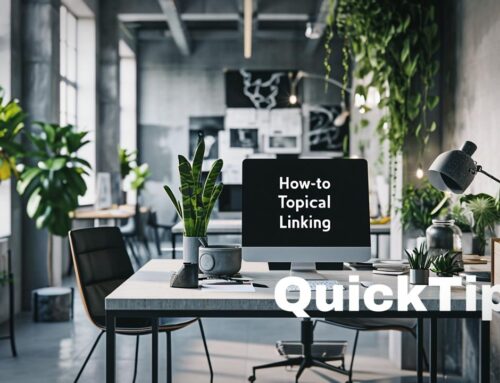SEO, or Search Engine Optimization, is a vital aspect of digital marketing. However, with its significance comes its misuse in the form of Negative SEO. In this article, we will delve into the subject of Negative SEO: what it is, its various types, the damage it can cause, and, importantly, how you can defend your site against it. This blog post aims to arm you with a comprehensive understanding of Negative SEO, equipping you with the knowledge to safeguard your digital presence.
Table of Contents
- What is Negative SEO
- Types of Negative SEO
- The Impact of Negative SEO
- How to Detect Negative SEO
- How to Defend Against Negative SEO
- FAQ’s, Frequently Asked Questions/Answers
- Final Thoughts
- Sources
What is Negative SEO
Negative SEO, in its simplest form, is the practice of using black hat and unethical techniques to sabotage a competitor’s rankings in search engines. It encompasses a range of activities designed to damage a website’s SEO performance, from creating unnatural or harmful links to the site, to content scraping, and even hacking the website.
Unlike traditional SEO practices that focus on improving a website’s visibility and ranking, negative SEO is a malicious attempt to deteriorate a competitor’s SEO ranking, which, if successful, can significantly affect the visibility, traffic, and online reputation of the victim’s website.
Types of Negative SEO
There are several ways that a malicious actor can carry out negative SEO, including:
1. Link Farms: These are groups of websites that link to each other for the sole purpose of manipulating search engine rankings. A malicious actor may add your website to a link farm, resulting in a sharp rise in unnatural links that can trigger penalties from search engines like Google.
2. Content Scraping: This is when your content is copied and distributed across multiple sites, often without permission. When Google detects identical content across multiple sites, it can lead to devaluation in the search rankings.
3. Fake Reviews: Negative reviews can harm a business’s online reputation, and too many can affect local search rankings.
4. Hacking: An attacker might hack your website to alter or delete your content, add spammy links, or disrupt your website’s performance in some way.
The Impact of Negative SEO
Negative SEO can have a disastrous impact on a website’s performance and a brand’s reputation. From causing a drop in search engine rankings to losing organic traffic and conversions, the consequences can be dire. A study by Rand Fishkin of Moz showed that bad SEO tactics could decrease traffic by up to 95%.
Additionally, recovery from a negative SEO attack can be time-consuming and costly. In severe cases, it might require a complete SEO overhaul. Businesses also risk losing customer trust, which can lead to lower sales and impact the bottom line.
How to Detect Negative SEO
Negative SEO often operates under the radar, making it crucial for website owners to proactively monitor their websites. There are several key indicators of a possible negative SEO attack:
1. Sudden Drop in Traffic: A sudden, unexplained drop in organic traffic can be a sign of negative SEO. Use tools like Google Analytics to monitor your site’s traffic regularly.
2. Unexpected Search Ranking Drop: Regularly tracking your keyword rankings can help identify any unexpected drops. A sudden drop in ranking for your top keywords could be a sign of negative SEO.
3. Unnatural Spike in Backlinks: A sudden influx of low-quality, irrelevant backlinks could be indicative of a negative SEO attack.
4. Monitor Your Site Speed: If your website suddenly becomes slow and there’s no logical explanation for it, this could be due to an attack.
5. Search Console Alerts: Google’s Search Console can send you alerts about any unusual activity on your site. It can inform you about malware, indexing issues, or penalties that have been imposed on your site.
How to Defend Against Negative SEO
1. Regularly Monitor Backlinks: Regularly checking your backlink profile allows you to spot any unusual activity. Tools like SEMrush, Ahrefs, or Google’s Search Console can help you keep an eye on your backlink profile.
2. Set Up Google Search Console Alerts: Make sure to enable email alerts in Google Search Console. It will alert you when your website is being attacked by malware, your pages are not indexed, or there’s a possibility of a manual penalty from Google.
3. Use a Reliable Hosting Company: A good hosting company can help protect your site against hacking attempts. Make sure your hosting company offers regular site backups and has good security measures in place.
4. Regularly Update and Backup Your Site: Regularly updating and backing up your website is a good practice. It ensures that even if your site is compromised, you can restore it to a recent, clean version.
5. Keep Your Website’s SEO Updated: Staying updated with the latest SEO trends and Google algorithm changes can help you safeguard against negative SEO.
FAQ's
- Link Farms: Adding a website to groups of websites that link to each other to manipulate search engine rankings.
- Content Scraping: Copying and distributing content across multiple sites without permission.
- Fake Reviews: Posting negative reviews to harm a business's online reputation.
- Hacking: Altering or deleting website content, adding spammy links, or disrupting the website’s performance.
Final Thoughts
Negative SEO poses a real threat to online businesses and websites, and its impacts can be damaging, ranging from lost organic traffic to tarnished reputations. However, with a proactive and robust defensive strategy in place, you can protect your website against these attacks.
The most important takeaway from this discussion is the need for constant vigilance. By regularly monitoring your site’s performance, backlinks, and search engine rankings, and by ensuring that you adhere to the best SEO practices, you can safeguard your digital assets from negative SEO threats.











Leave A Comment